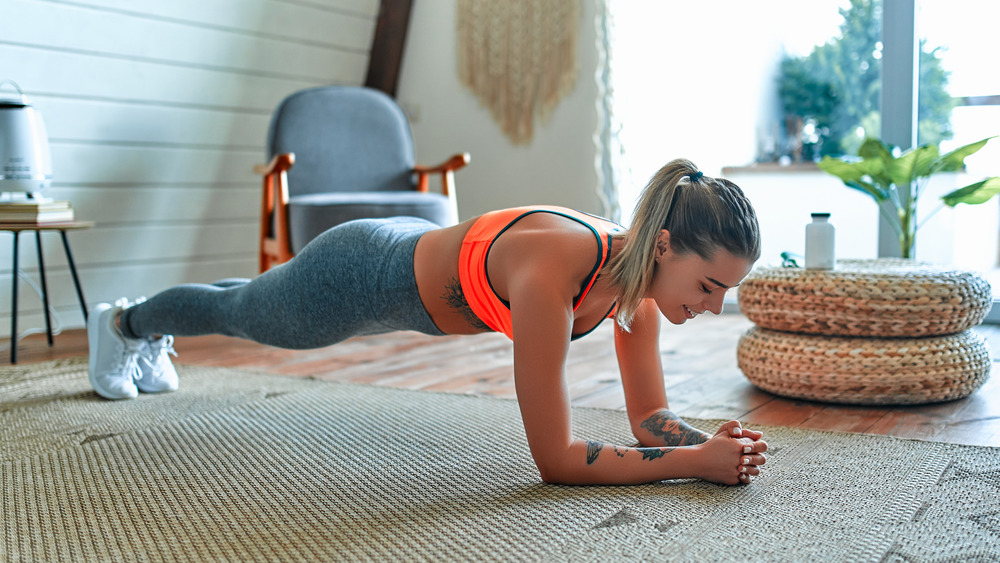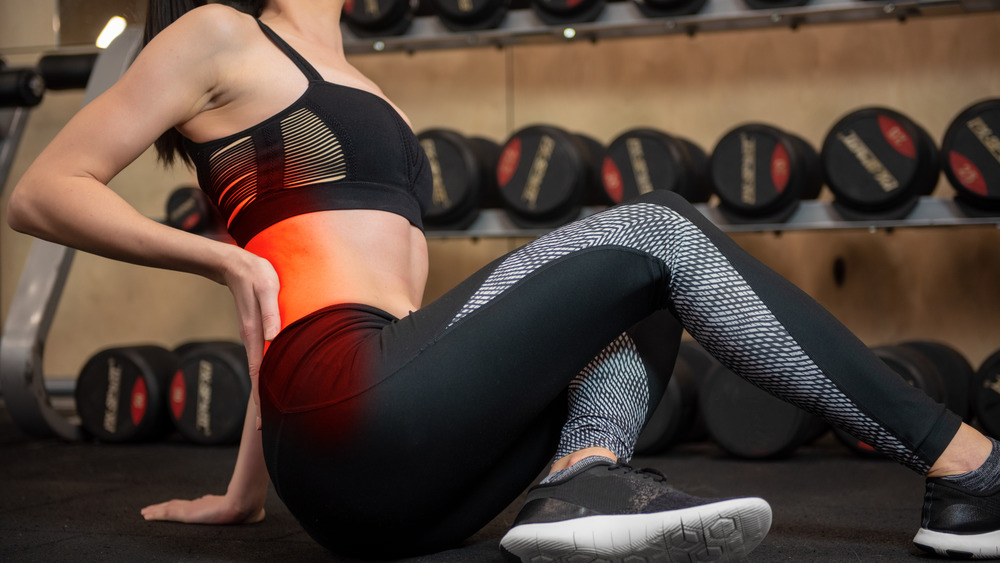Mistakes Everyone Makes When Planking
Love it or hate it, planking is an effective and efficient way to work out your abs and glutes. Low on space? Live in an apartment? Need to fit in a good ab workout on a lunch break? Planking is the answer to all of these problems.
This is why planking challenges were all the rage for a while. The exercise even turned into a meme — which is more than anyone can say about crunches. And while this got the word out about planking's benefits, it also put all the emphasis on how long someone could plank, not how solid their form was.
Unfortunately for the planking meme, all the benefits of this exercise hinge on how well someone can hold their form, not how long. Someone can hold a band plank for as long as they want, and not only are they going to miss out on most of the benefits, they might actually hurt themselves. According to Prevention, arching your hips during a plank can strain your hip flexors, leading to prolonged pain and more than a few missed workouts.
Of course, it's not just your hips that you need to worry about. A good plank requires you to engage both your core and your glutes while keeping your knees straight, your back flat, and your face parallel with the floor. That sounds like a whole lot all at once, but when you break it down it's easy to spot the common mistakes and correct them.
Common plank mistakes — and how to avoid them
The most common mistake is letting your core go soft. Imagine "sucking in" your stomach before you start a plank. As soon as you can't maintain that level of engagement anymore, it's time to stop. If you don't, you risk shifting the strain to your lower back, as emphasized in Cosmopolitan.
The same goes for your glutes. If you can keep your glute muscles tight anymore, it's time to take a breather. Pushing yourself past this point may lead to dipped hips or bent knees, both of which shift the strain of the plank to joints instead of muscles.
Other signs that it's time to move out of your plank is when your shoulders start to hunch or round or if you have to shift your hands from their proper positions under your shoulders. And if you catch yourself watching the clock or looking around, it's a double-edged sign that it's time to try something else. Not only can looking around strain your neck, but it's a good sign that you're losing focus on your plank. Like the American Council on Exercise says, "Longer and longer planks make about as much sense as staying in first grade forever."
The plank is the exercise's first form. And it's a tough one to master, no doubt. But it's only the first step in walking planks and mountain climbers, just to name a few variations. And the best way to work up to these variations is by focusing on your form and muscle engagement. So skip the stopwatch or challenge timer and focus on your body's reaction to the exercise instead. You'll be pulling out the lateral rolling plank in no time.


